As soon as Hitler came to power in 1933, measures were taken to discriminate against those whom the Nazis considered to be ‘subhumans’. This included Jews, Gypsies and later Slavs. In 1933 most Jews were no longer allowed to work in the civil service, two years later the Nuremburg Laws divided the population into Aryans and non‐Aryans and Jews were progressively denied any rights at all. The Sinti, Roma, Jews and Slavs were all destined for extermination. Initially Jews were persecuted or forced to emigrate, later Nazis plans changed to murder. Their properties were confiscated.
In 1939 there were around 3.2 million Jews in Poland, making up some eight percent of the population. Killings started as soon as the Nazis invaded Polish territory. Jews were murdered by the Wehrmacht during the campaign of September 1939 which was only a prelude to later actions aiming for the total extermination of the nation. At the end of October 1939 the decision was taken to deport 550000 Jews from the annexed territories to the General Government.
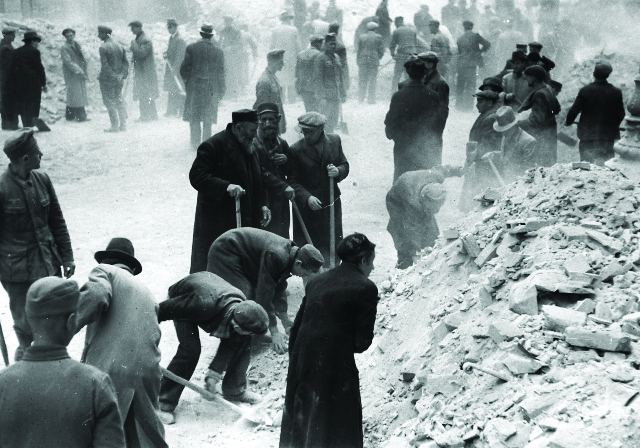
It was also decided to concentrate the Jewish in the assigned areas. Before being placed in ghettos, Jewish people were persecuted in numerous ways ‐ work became compulsory, it was forbidden to change the address without authorities' permission and they had to obey a curfew. Moreover, under threat of severe imprisonment, Jews were forced to wear the Star of David to make their identification easier for Germans. They could be forced to do slave labour, were not permitted to change their address and had a shorter curfew than that given to others. Their property was stolen, schools were closed and religious practices forbidden. In November 1939 Jewish Councils, the Judenräte, were set up in order to facilitate German orders.

By the end of 1939, almost all of the Jews in Gdańsk and West Prussia were deported to the General Government. Those who opposed the deportation, followed orders too slowly or resisted were often shot.
The policy was different in the Warta area. The first one was opened in October 1939 in Piotrków Trybunalski and the largest one was in Łódź. Smaller towns also had ghettos. During the years 1939‐1940 around 380,000 people were imprisoned in ghettos in the Warta area.
In the Katowice area there were over 100,000 Jews. The ghettos were not opened here until 1942.
Special slave labour camps for Jews were opened in 1939 and called Zwangsarbeitslager für Juden, Julag or Judenarbeitslager. Most were in the General Government and were organised by the administration, police and SS. The largest camp was in Skarżysko‐Kamienna at a weapons factory. These camps were surrounded by barbed wire. From 1942‐1944 they were successively liquidated.
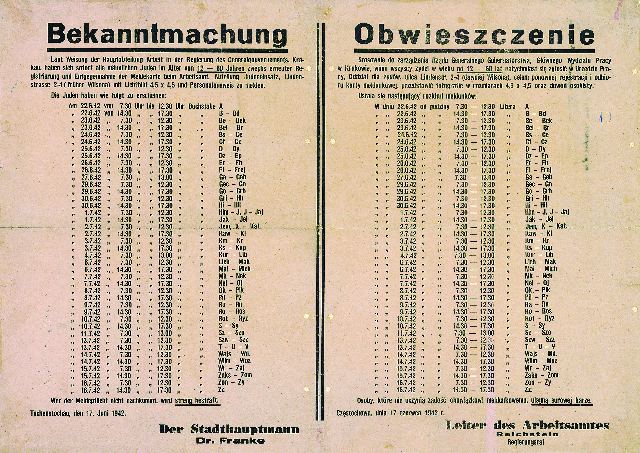
On 1 October 1940, governor general Hans Frank signed an order limiting Jews’ stay to ghettos. During the course of 1941, the ghettos in the smaller towns were liquidated and the inhabitants had to move to larger towns. These people were not given anywhere to live, housing was the responsibility of the Judenrat.
Some of the ghettos were surrounded by walls or barbed wire and in time they became completely closed. There was a shortage of food, medicines and was overwhelming overcrowding. On 15 October 1941 the death penalty was introduced for those leaving the ghettos without permission and for those who helped Jews in hiding outside the ghettos. Poland was the only country where such draconian measures were introduced. Despite this, people were forced to leave the ghettos in search of food.
The Germans planned the liquidation of Jewish industrial businesses, however as a result of economic necessities, they kept them open as a way of using free labour whilst under German management. At first this was done on a business by business basis, however by the middle of 1941 this took the form of large conglomerates which had absorbed hundreds of smaller businesses. The Jews working there were effectively slaves, they received no remuneration whatsoever although when the deportations started, a position in such a business became very expensive to buy as it meant life. The German authorities wanted the workers to be as effective as possible. The work destroyed people physically as did the lack of food, overcrowding and epidemics. The death rate in the Warsaw ghetto was horrendous. People died en masse in the streets.
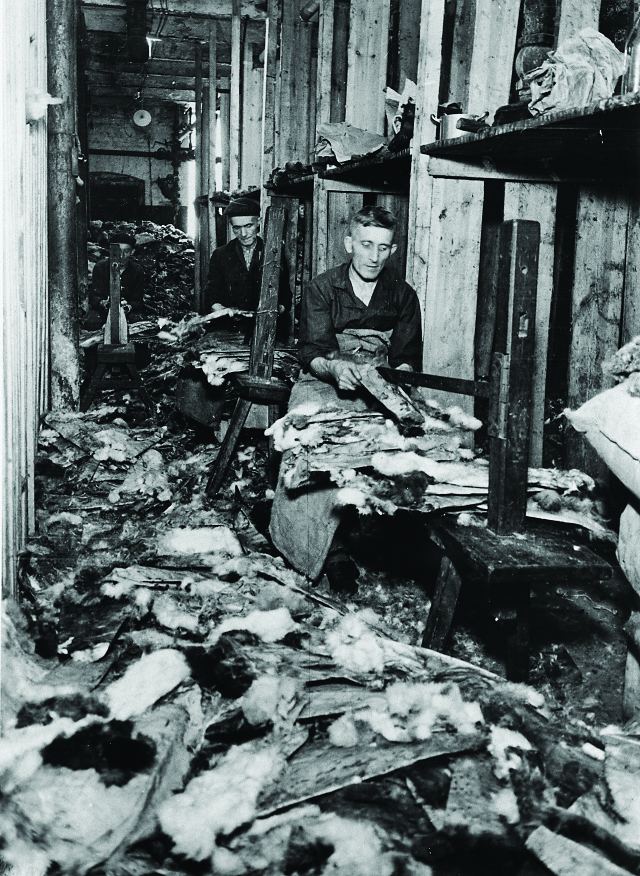
The Nazis decided on the final solution to the Jewish question around New Year 1941/42. At the Wannsee conference in January 1942, civil servants in various government ministries were informed of the plan for the elimination of the European Jews. In the General Government it was given the name Action Reinhardt. It was planned systematically and in stages with the population of one ghetto after another being deported to a death camp and murdered there. In the case of large ghettos such as ones in Warsaw or Łódź this happened over a longer period of time. The Germans forced the Judenräte to draw up transport lists which would take people to the death camps. The first death camp was at Kulmhof (Chełmno nad Nerem). People were taken here mainly from the Wartheland region from December 1941 to April 1943 and again in June and July 1943. In 1942 death camps were set up in Bełżec, Sobibór and Treblinka whilst Auschwitz‐Birkenau and Majdanek played the roles of concentration and death camp. Jews were brought to these camps from not only Poland but from all parts of Europe. After the journey by train or by lorry (often in horrible circumstances) followed the selction. Especially the young and healthy people or such who had special skills were chosen to work and the remaining group was led to a square where they had to leave their belongings before going to the “bathroom”, which turned out to be a gas chamber. At Birkenau and Majdanek, an insecticide, Zyklon B, was used to kill people, in the other camps it was exhaust fumes. The whole process took 20 minutes. Initially the bodies were buried, later bodies were burnt. The prisoners who worked at sorting the possessions of the murdered and destroying the bodies were Jewish.
Bełżec functioned from March to November 1942, Sobibór from March 1942 to October 1943 and Treblinka from July 1942 to November 1943. Once the Polish Jews had been murdered the camps were liquidated, gas chmbers, fences and barracks removed and in Sobibór the Germans planted trees. The Germans continued to murder people in Birkenau until 28 November 1944.
Action Reinhardt was responsible for the deaths of between 1.7 and two million Jews.
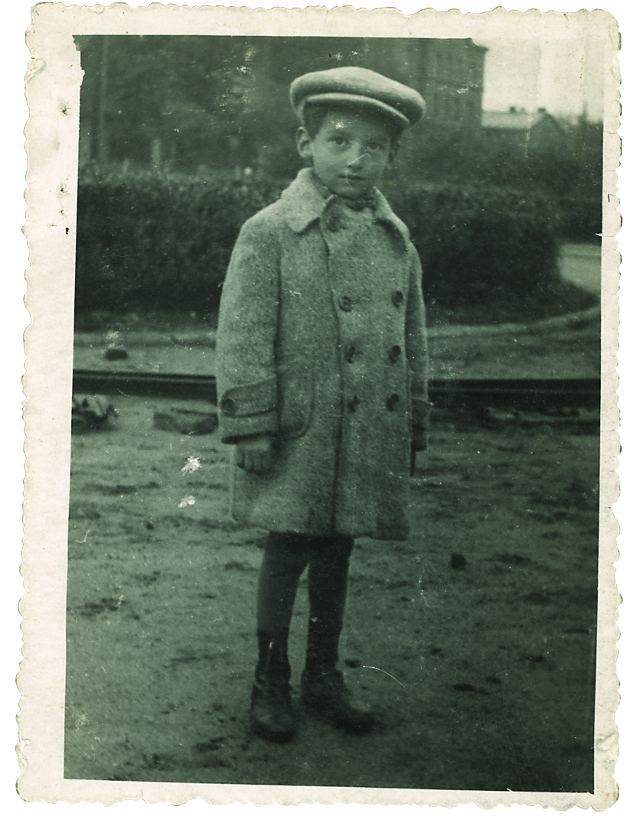
The Lublin ghetto was the first large ghetto to be destroyed in April 1942. Kraków existed until March 1943, Warsaw until May 1943, Białystok until August 1943. After this the only ghetto still in existence was Łódź which was not liquidated until August 1944. Łódź managed to survive so long probably because it was so productive and brought major profits to the Germans companies and individuals that made use of slave labour there.
About 500000 Jews managed to survive in camps such as Auschwitz, Gross Rosen and others. They were evacuated in death marches from January 1945 because the eastern front came nearer and nearer. More than sixty percent did not survive these marches.
We are unable to establish how many Jews were murdered by the Nazis. Czesław Madajczyk estimates that 2.7 million Polish Jews were killed of which two million died in various camps and 500000 in the ghettos.
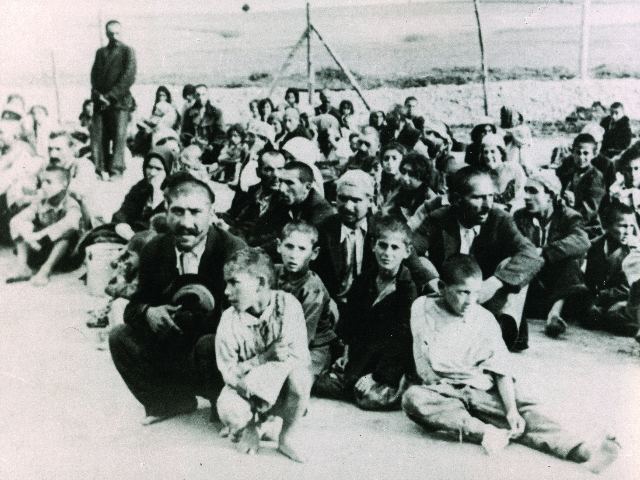
The Nazis also wanted to destroy the Gypsies. After the occupation of Poland, Sinti and Roma were deported from Germany to Poland. They were forced to perform slave labour and placed in concentration camps. Himmler claimed that Gypsies were born criminals and as such needed to be completely eliminated. They were placed in ghettos such as at Łódź or murdered in death camps such as Chełmno nad Nerem. At Auschwitz a special camp was set up for them. It was liquidated following the uprising of 1944 and all those there were murdered. At Auschwitz, over 21,000 Sinti and Roma from Germany and Poland were murdered.
Relations